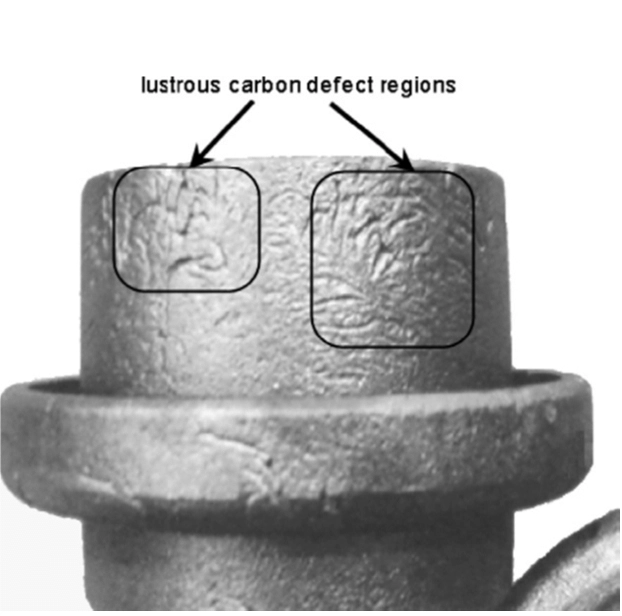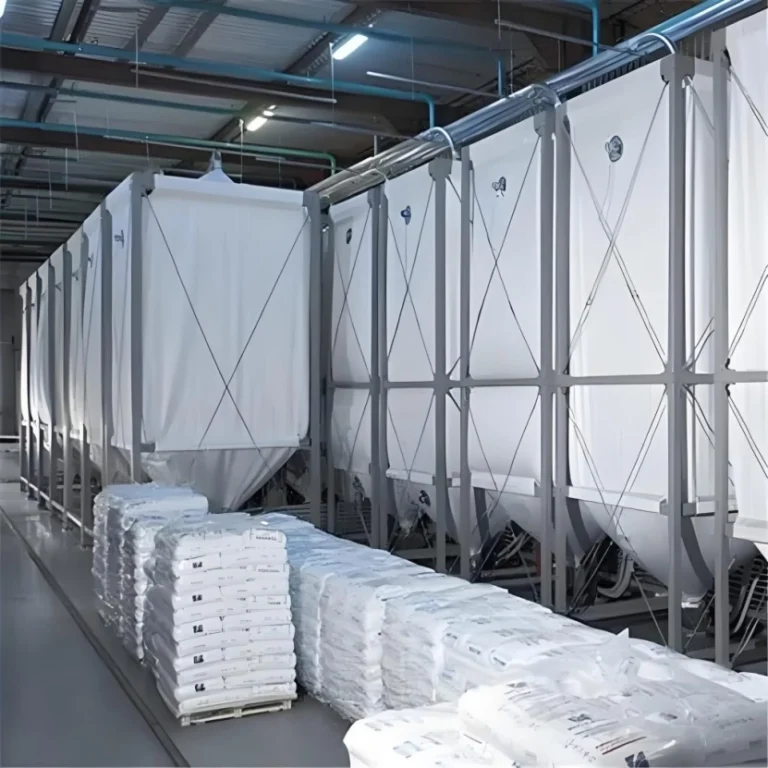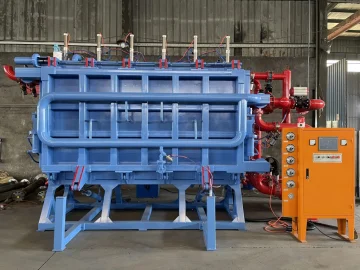Lost foam casting is one of the evaporative-pattern casting in which foam is used instead of wax. It consists of setting a foam pattern in sand with its pouring basin and sprue, then pouring the molten metal into the mold to vaporize the foam, hence casting the desired pattern. The vacuum negative pressure system is at the heart of this process, ensuring the quality of the final product.
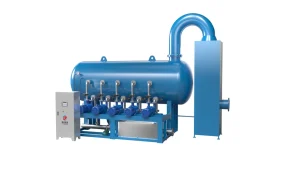
Why is a Vacuum System Necessary in Lost Foam Casting?
Critical functions that are quite vital in ensuring quality and the success of the casting process are played by the vacuum system in Lost Foam Casting. First, dry sand is compacted around the foam pattern, which helps to prevent problems such as washing, mold collapse, and mold wall movement. Dry sand moulds become more stable under air pressure because of the increased static friction between the sand particles.
Besides, the system helps in sucking the gases that result from the gasification of the foam, hence eliminating casting defects such as holes. Finally, the negative pressure increases the flow speed of the molten metal, hence increasing the speed at which the mold is filled, and thus improving the quality and successful production of the castings.
What are the Key Components of a Lost Foam Casting Vacuum Negative Pressure System?
A typical vacuum negative pressure system includes several key components:
- Vacuum Pump: This is the core of the system, creating the vacuum required for the process. Many casting companies utilize water-ring vacuum pumps, which use water to seal the pump and ensure it operates effectively. These pumps create a vacuum by absorbing water-insoluble and non-corrosive gases in a closed container.
- Wet Dust Collector:This component removes sand and dust particles from the exhaust gases pulled from the sand box. The gases pass through a water bath that traps the particles, preventing them from entering the vacuum pump and causing wear. The dust collector uses a bottom valve to periodically expel the accumulated sand and dust.
- Pressure Stabilization Tank:This sealed container stabilizes the pressure within the vacuum system. It buffers pressure fluctuations, ensuring the casting process runs smoothly. Some pressure stabilization tanks also incorporate dust collection, providing dual functionality. However, the tank’s volume must be appropriate, as a tank that is too small may not stabilize pressure effectively, while one that is too large may increase energy consumption and space requirements.
- Check Valve (One-Way Valve):This valve prevents water from flowing back into the vacuum system in the event of a sudden power outage or other stoppage. Without this valve, water could flow back into the sand box, potentially causing an explosion during casting.
- Air-Water Separator:This component separates water carried with the air from the vacuum pump. This separated water can then be released or reused and prevents contaminated water from being released to the environment.
- Vacuum Distributor (Vacuum Docking Machine), Vacuum Hoses, and Connecting Pipelines:These elements facilitate the distribution of the vacuum to the sandboxes. In automated production lines, pneumatic vacuum docking machines and ball valves are also included.
How Does the Vacuum System Work in the Lost Foam Casting Process?
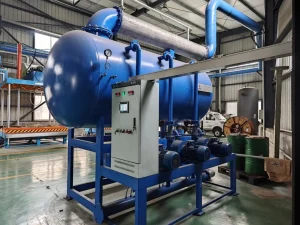
The process is initiated by a vacuum pump that draws air from a closed container, creating a vacuum that is needed for the casting process. The negative pressure in the system is usually maintained between -0.5MPa and -0.8MPa. The system uses a series of pumps to maintain this pressure, and it includes a cooling system consisting of a vacuum tank and a drainage tank. Drainage is automatically controlled by a programmable logic controller (PLC). The entire system uses a closed-loop air energy heat recovery system to recover heat from the molding machine and redirect it to the drying room.
During the casting process, the vacuum system has several functions:
During the casting process, the vacuum system performs several essential functions. It compacts the sand around the foam pattern, enhancing the static friction between sand particles, which is crucial for forming a high-quality mold.
Additionally, the system extracts gases produced during the foam’s gasification, preventing casting defects like holes. The vacuum system also accelerates the flow of molten metal, which improves casting quality. The negative pressure boosts the filling ability of the liquid metal and helps reduce carbon defects on the surface of the castings. Furthermore, vacuum sealing supports the collection and treatment of smoke and dust, contributing to a cleaner and safer working environment.
What is the Ideal Negative Pressure for Lost Foam Casting?
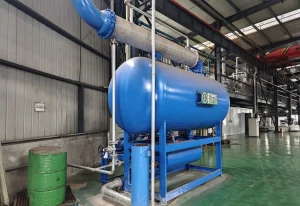
For casting steel, the ideal negative pressure ranges from 0.04MPa to 0.06MPa. However, this range is a sensitive one:
- Too low:If the pressure is too low, it can cause the box to collapse, especially when casting large pieces.
- Too high:Conversely, excessive negative pressure can lead to instability of liquid metal filling, increase wall attachment effects, and result in defects like slag inclusion and carburization. The relationship between negative pressure and the mold filling process is complex, as simulations have shown:
- Optimal filling: The fastest mold filling occurred at a pouring temperature of 1450℃ and a negative pressure of 0.04MPa.
- High negative pressure: When the negative pressure is too high, it can affect the flow of the molten metal, causing it to flow along the wall of the casting. This can create a concave negative pressure area, which hinders the discharge of reaction products from the liquid metal and foam pattern, reducing the fluidity of the molten metal.
- Solidification: The fastest solidification occurred at 1450 ℃ and a negative pressure of 0.06MPa.
- Shrinkage: The smallest amount of shrinkage was found at 1420 ℃ and a negative pressure of 0.05Mpa. Based on simulation results, the most effective process used a pouring temperature of 1420℃ and a negative pressure of -0.05MPa.
Why are Proper Exhaust Gas Handling Systems Important in Lost Foam Casting?
The vacuum negative pressure system collects exhaust gases, which must be treated to prevent pollution. Many businesses overlook the importance of connecting the system’s gas circuit to exhaust treatment facilities. It is also important to note that the vacuum system does not discharge wastewater.
How Does a Central Vacuum System Enhance the Lost Foam Casting Process?
A central vacuum system plays a vital role in lost foam casting, offering numerous advantages. It features a professionally designed condenser structure, which enhances condensation efficiency.
The system is equipped with reliable vacuum pumps and utilizes constant pressure control to maintain consistent vacuum pressure. High-quality control instruments, electrical components, and valves ensure smooth operation. Automatic control is facilitated through a PLC, and the negative pressure pump incorporates variable frequency control with adaptive start/stop functionality.
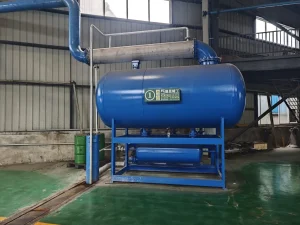
The system also ensures quick cooling of the white mold, reducing moisture content to prevent deformation after demolding. The white mold surface remains smooth without bulging post-cooling and demolding. Additionally, many central vacuum systems incorporate a closed-loop air energy heat recovery system, recycling heat from the molding machine to the drying room.
Hangzhou Ouchen Technology Co., LTD.
Hangzhou Ouchen Technology Co., LTD is a leading manufacturer of high-end intelligent lost foam casting equipment, dedicated to providing cutting-edge solutions for the industry. With a focus on innovation, quality, and efficiency, they offer a range of products, including foam sheet machines, pre-foaming machines, foam molding machines, and air dryers.
Hangzhou Ouchen Technology Co. is located in Xindeng Town, Fuyang District, Hangzhou City, a major EPS equipment production center in China. The company integrates advanced German technology with independent intellectual property patents, emphasizing “science and technology, quality, high efficiency and energy saving”. As a key partner of the China Lost Mold Industry Association, it is also a research and development base for new equipment.
Ouchen’s Central Vacuum System
Ouchen’s Central Vacuum System is a key product known for its reliable performance, efficient design, and the use of high-quality components. The company’s central vacuum system adopts PLC automatic control, with a tower condenser operating in a closed cycle. The negative pressure pump utilizes variable frequency control and has an adaptive start-stop function. The system is designed to maintain negative pressure, and it also incorporates a closed-loop heat recovery system that sends heat from the molding machine to the drying room. To explore how Ouchen can enhance your lost foam casting process, contact them at +86 15988479417 or zyh@oc-epc.com.

